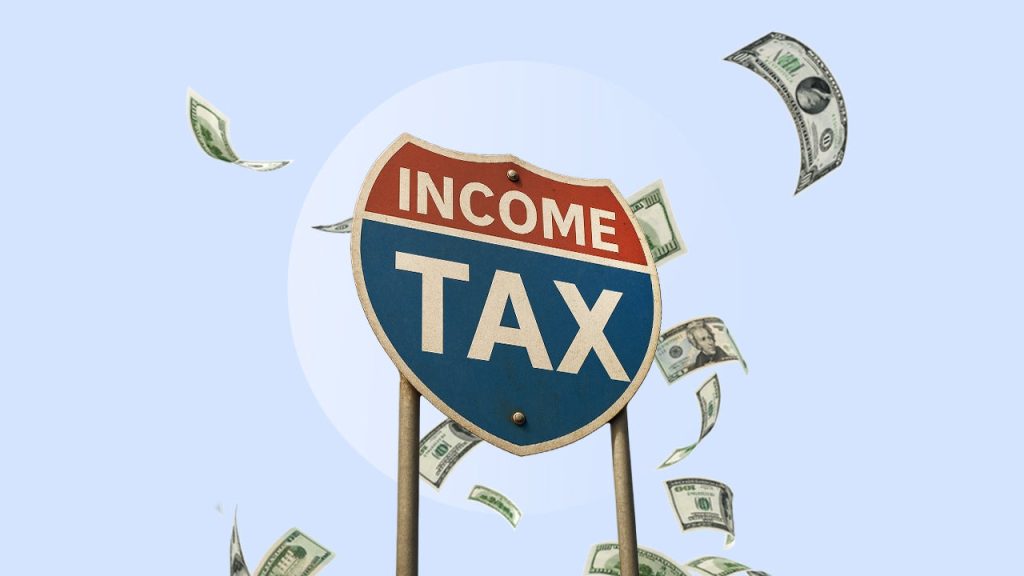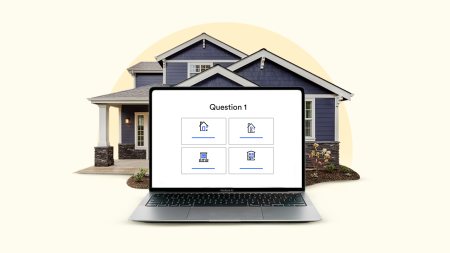It’s understandable to feel envious of people who live in states with low or no income taxes. After all, after paying federal taxes, state income taxes take another swipe at your bottom line.
But if you’re comparing places to live, look at the big picture and consider other local taxes, experts say. Because if state income taxes are really low, you’re likely paying higher property or sales taxes to compensate for that.
“Washington State famously has no income tax, but high sales tax, and Oregon is the opposite. So you want to look at the whole picture,” says Heather Liston, a certified financial planner, enrolled agent and principal at Clarity Financial in San Francisco.
States with the highest income tax rates
That said, there are some states where income taxes take a much bigger bite out of residents’ earnings. The states with the highest tax rates are as follows.
Keep in mind that some states use a graduated, or progressive, tax system — where income is bunched into chunks, each of which is taxed at a different rate. This list focuses on each state’s highest tax rate, also called the marginal tax rate.
| States with the highest tax rates | Top tax rate |
|---|---|
| California | 13.3% |
| Hawaii | 11% |
| New York | 10.9% |
| New Jersey, Washington D.C. | 10.75% |
| Oregon | 9.9% |
All of the states (and Washington D.C.) in the list above have graduated, aka progressive, tax systems. In a progressive tax system, your marginal tax rate is the top rate you pay, but your effective, or actual, tax rate is a blend of rates, and is generally lower than your marginal rate.
Note that a state’s top tax rate often only affects the people who make the highest taxable incomes.
“People will think of California, for example, and their highest tax rate is much higher than the average around the country. But that’s for high income,” says Alyssum Malone, a CFP® and senior wealth advisor with Focus Partners Wealth in Colorado Springs, Colo.
Here are two examples of how California’s current tax rates apply to specific situations:
- A married couple that files jointly with $125,000 in taxable income pays a top rate of 8 percent.
- A single person with $40,000 in taxable income pays a top rate of 4 percent.
And portions of income for all taxpayers in California are taxed at 1 percent and 2 percent. In fact, California has a total of nine different tax brackets. That’s the nature of a progressive tax system: Your income is separated into different chunks, each of which is taxed at a different rate.
And California’s 12.3 percent rate?
- For a married couple filing jointly, that 12.3% rate applies solely to income above $1,442,628 in 2024.
- For a single filer, the 12.3 percent applies to income above $721,314 in 2024.
States with the lowest income tax rates
At the other end of the tax spectrum, nine states have no individual income tax: Alaska, Florida, Nevada, New Hampshire, South Dakota, Tennessee, Texas, Washington and Wyoming. (Washington does tax capital gains income for some high earners.)
The states that levy an income tax, but have the lowest rates in the country, are as follows.
| States with the lowest tax rates (among states that levy an income tax) | Top income tax rate |
|---|---|
| North Dakota, Arizona | 2.5% |
| Indiana, Louisiana | 3% |
| Pennsylvania | 3.07% |
| Ohio | 3.5% |
| Iowa | 3.8% |
Five of these states have flat tax structures — Arizona, Indiana, Iowa, Louisiana and Pennsylvania — while North Dakota and Ohio have a graduated, or progressive tax structure.
How states tax income
States tax your income in different ways: Some states have graduated systems, similar to the federal tax system, in which people with low incomes pay lower tax rates and higher earners pay higher ones.
Other states employ a flat tax in which the same rate is applied to each taxpayer, regardless of income.
And some states have no income tax at all — often grabbing the attention of Americans interested in holding on to as much of their income as possible.
However, states with low or no income taxes often make more of their revenue through sales taxes, property taxes and inheritance taxes, Liston says. For that reason, it’s best to consider a place’s income taxes in context with all the taxes you’ll face when living there.
And even then, what you get for those taxes can be drastically different.
“I’m in California, which has famously high taxes in basically all those areas — high income tax, high sales tax, high property tax. But look at how many people choose to live here anyway,” Liston says.
“Taxes pay for services that matter to us,” she says. If you move to a state with lower taxes but find that the government and services don’t meet your needs, you might not be happy with that tradeoff, Liston says.
Consider the cost of living
Comparing states solely by income tax rates doesn’t necessarily give a fair picture of what you’ll pay in overall taxes if you live there. There’s no free lunch, and states have to pay for services somehow, Malone says.
Taxpayers also should consider their earning potential in a particular location to fully understand how a place’s taxes will affect their finances.
“Maybe the income that they would make is going to be high enough to overcome a higher tax rate,” Malone says.
If you’re a retiree or thinking about where you might want to retire someday, also consider what kind of breaks are available. “A lot of states may have state tax, but then offer tax credits, deductions and incentives for retirees, to motivate retirees to live in the state. So the actual tax they’re going to pay varies from the rate that they’re seeing if they Googled the tax rate,” Malone says.
Perhaps a better way to understand how where you live impacts your finances would be to use a cost of living calculator, Malone says.
Liston thinks that people often focus too much on taxes, especially when considering where they want to live in retirement.
“What matters are things like, where do your children and grandchildren live? Where can you get a house with no stairs, or whatever else you need for aging in place? What kind of cultural things do you enjoy?” Liston says. “Tax should be the least of it when you think about where you want to live.”
Why we ask for feedback
Your feedback helps us improve our content and services. It takes less than a minute to
complete.
Your responses are anonymous and will only be used for improving our website.
Help us improve our content
Read the full article here









